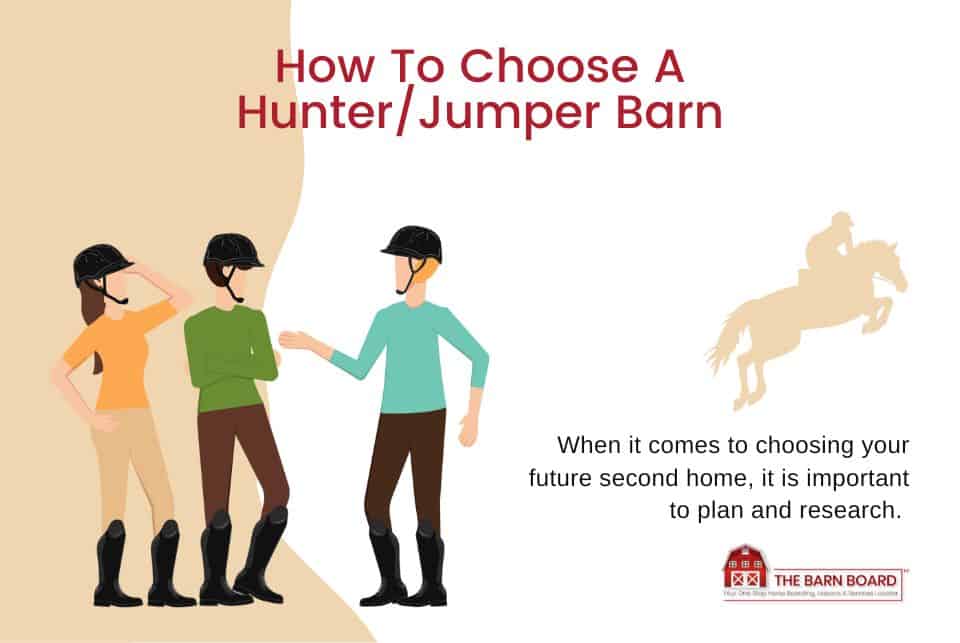Whether you are just starting out or a seasoned competitor looking to better your skills, choosing a barn that fits can be both exciting yet challenging. Every stable and trainer specialize in different areas, so a seasoned competitor will need to look for a show barn which competes in the discipline of their choice.
Some barns focus on hunter, jumper, and equitation, while others may compete and train exclusively jumper riders.
The key to finding a good hunter/jumper stable is determining:
- your monthly budget
- in-house coach(es) availability, experience, certifications
- flexibility to bring in an “outside” coach (should you have your own coach)
- how are the horses cared for
- how are the boarders, riders, staff in general (positive, welcoming or too much drama?)
For many hunter/jumper riders, choosing a barn has more to do with picking a coach rather than anything else.
Going to a top rider is a good option, but do consider that not every great rider is a great trainer. Instead, look into training with the coaches that have produced many of these great riders. However, going to the peak of the industry is not always possible because of pricing, so before going to all of the greats, do determine your budget.
Besides pricing, check through forums, reviews, and social media in order to get a better idea about the barn and the trainer(s). It may be useful to get in touch with other riders who have trained/boarded their horses at the specific barn. Ask about how the lessons are tailored to each individual and how they have helped the students and their horses. If the feedback is pleasing, schedule an evaluation lesson to see if it is a good match.
Every trainer has a different style of coaching, so it is vital to get a feel before making the commitment.
A show rider might also benefit from watching the students of various barns at local and rated competitions. At the end of the day, it’s the people that make the atmosphere of the barn. Try to stick around in the stable, get a feel of the community, ask your questions, and observe the lessons.
When it comes to facilities, safety should be the first thing that comes into mind.
This means that the overall barn, arena, and fencing are properly built. Watch for lots of sharp edges and broken areas; this can be hazardous for the horse and in turn the rider. Additionally, look into the tack and feed rooms to see if the rooms and their contents are being properly maintained (clean tack and closed feed bins are a good sign).
If you are already a horse owner, think of your horse’s needs. It helps to imagine your horse in the facility and observe how the horses are being cared for. Don’t be fooled by fancy facilities either, as they too can be made without putting the horse first.
For instance, there are some stables out there that have little to no turn out areas or opportunities. Is no turn out for your horse a deal breaker? For many, it is. For some, it’s not.
Look into the stalls and see the state of the horses. Has the horse had a proper groom? Is the stall clean? Do the horses have an overall happy expression?
The two most obvious red flags are extremely fouled bedding (wet straw and a whole bunch of manure) and horses left with sweat marks. One important point to consider is the type of care the stable provides.
Think about your commitment level and location; if you’re unable to get to your horse everyday, you want to make sure he/she will be well taken care of.
When it comes to choosing your future second home, it is good to plan, research, watch, and really get a good feeling of what the place is like.
Take your time, try to understand what type of program the facility offers, and ask lots of questions (you are the one paying afterall).
If you are stuck between a few barns, it may be helpful to create a simple table, weighing out the options using different factors (such as location, rates, etc.) rated on a scale.
Whatever you pick, ensure that both you and your horse will feel safe in the atmosphere and will be challenged properly with the training.


